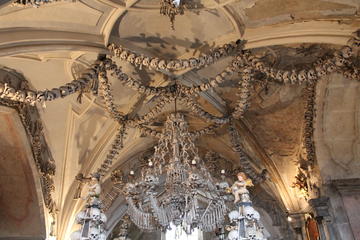Kutná Hora
TIME : 2016/2/22 10:36:54

Kutná Hora
Sitting 45 miles (73 km) east of Prague in Bohemia, Kutná Hora is an intriguing town immersed in history. Its origins stretch back to 1142 with the foundation of a Cistercian monastery at Sedlec, and after the discovery of silver in the hills around the region, the town quickly became a wealthy enclave and competed with Prague in the Middle Ages for political and economic power.
Much of the town center is now a UNESCO World Heritage site, filled with gently dilapidated Baroque buildings. Visitors should see the Roman Catholic Cathedral, glimpse the exterior of St James’s Church with its mishmash of Baroque and Renaissance architecture and landmark 282-foot (86-meter) tower. Additionally, the Italian Court, which started life as the Royal Mint to the kings of Bohemia and eventually became their palace, has a small museum of coins.
The Gothic St Barbara’s Church (Barbara was the patron saint of silver miners) serves as the city's proud symbol. The flamboyant architecture, complete with bristling spires, flying buttresses and eight chapels, reflects the wealth and power of the mining city, while the interior is richly decorated with a series of Renaissance frescoes featuring mining and the minting of coins. The medieval mine shafts way below the present-day city at Hradek Castle also house the Czech Museum of Silver.
But it is the ossuary at the monastery in Sedlec that really grabs attention in Kutná Hora; allow at least an hour for your visit and a 20-minute walk each way from the town center. The chapel is partly below ground, lit only by candlelight and entirely decorated and furnished with human bones. The candelabras, coats of arms, monstrances, pillars and wall decorations are all made of bone; skulls adorn dark corners of the chapel, and leg bones hang in garlands from the vaulted ceiling. The remains of more than to 40,000 people have gone into the macabre, but strangely beautiful 19th-century decorations were created here with the use of thousands of victims of the Black Death and the Hussite Wars in the 14th and 15th centuries.
